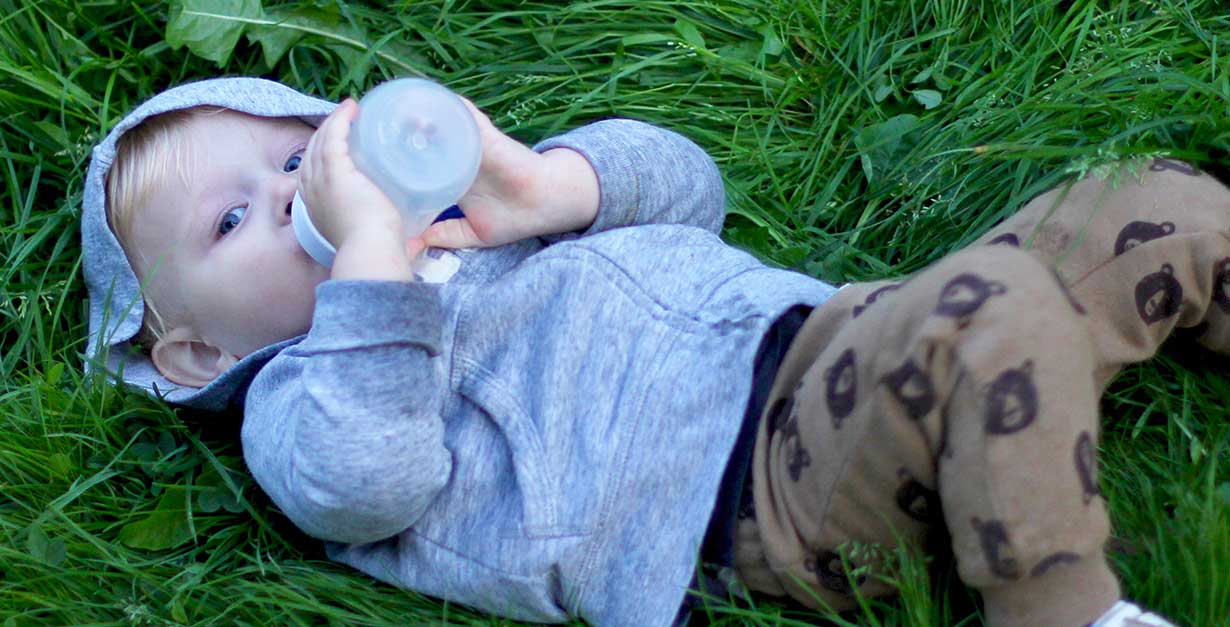Toddler Night Weaning: How Do I Stop the Constant Night Wakings?
A mom named Hailey wrote to me and asked me a question about toddler night weaning:
“My one-year-old wakes up six times a night. Sometimes it is for his pacifier and sometimes it is for milk. But mostly it is for no reason other than for us to come into his room. He’s teething so it’s hard to try new methods. I’m expecting another baby, so I really need to get this sorted. I hate the idea of “controlled crying” and won’t do it. We’re both so tired. Please help.”
You’ll learn about:
- Timed checks
- Pacifiers
- Dream and “set time” feedings
- Using The Shuffle for toddler night weaning
Timed Checks
Here in the United States we call “controlled crying” Ferberizing. Dr. Ferber doesn’t like his name being used as a verb, so out of respect for him, let’s call it “timed checks”. Many parents don’t feel comfortable leaving their baby or toddler to cry it out alone in their crib or bed. That’s what started The Sleep Lady Shuffle.
Find the Toddler Night Weaning Method that Suits You
With any sleep coaching method, what’s most important is that you pick the method that is the right match for your child’s temperament, your parenting philosophies, and the method that you can follow through with consistently.
If you already know that timed checks are not going to work for you, then you have nothing to lose by trying something gentler, like The Sleep Lady Shuffle, which is a method more like fading.
Fading is a sleep method term that means a gradual reduction in parental intervention. The basic goal with fading is to help minimize the crying and frustration your child experiences, while allowing him to learn to fall asleep on his own. With fading, it’s a gradual but deliberate transition that helps babies take, for lack of a better term, the baby steps of sleep and self-soothing.

When you do the Sleep Lady Shuffle you’ll stay with your child, offering physical and verbal reassurance until they’re asleep. Every few nights, you move a few feet farther away from your child, thus intervening less and less in their falling asleep. You may already know a little bit about this method, but you can certainly read more about it in the book and on the blog.
Wondering about night weaning?
Read: Night Weaning After Six Months: How to Gently End Night Feedings
Sleep Needs of a One-Year-Old
A one-year old needs anywhere from 10 to 12 hours of sleep at night. Usually it averages around 11 hours of sleep at night. In addition to this nighttime sleep, he will need about 2 ½ hours of naps each day. At this age your child should take a morning nap and an afternoon nap, but together these naps should total approximately 2 ½ hours. You can watch your child to determine his specific needs, but that is the average amount of sleep for this age group.
Night Feedings
Check with your doctor to make sure that what your child is eating during the 12-hour wakeful period of the day is enough that he doesn’t need to consume any additional calories during the night. Then you can create a feeding plan and a night weaning plan.
For instance, your plan may be to keep one feeding or it may be to wean all of the night feedings — with the support of your doctor. You want to make that decision to create your sleep plan before you actually start to sleep coach.
Have a goal to reduce or eliminate night feedings for your baby?
Gentle Sleep Solutions can help with a gentle, step-by-step guide to get your baby sleeping again.
Try A Dream Feed Before Fully Night Weaning
Remember that you can make this transition gradually. As an example, if you’re feeding him three times a night and you want to keep only one feeding, you can do a dream feed. This is when you decide to go in at 11 o’clock, pick him up, feed him a bottle, and put him back down to sleep without waking him up. Then every other waking you will sleep coach him without a feeding.

“Set-Time” Feeding
An alternative option to dream feeding option is to do a “set-time” feeding. This is when you feed him the first time he wakes up, as long as it has been four hours since the last feeding. If his first wake-up tends to be at 1:00 a.m., then I would say that when he wakes after 12 midnight you will go in and feed him then. At any wakings before and after that feed, you’ll sleep coach.
The Pacifier Question: To Keep Or Not
In terms of the pacifier, you have to make a decision whether you want to keep it or not. The good news is that at one year of age children can usually pick up the pacifier and put it into their mouth by themselves. They have already developed what is called the pincer grasp by now.
Does your child love a lovey?
Read: The Lovey — Your Child’s First Best Friend
Train Him To Find His Pacifier
Here are the 3 steps to help him to find his own pacifier at night:
Before you start put several pacifiers in the crib or cot.
- Put it in his hand(s) – Your son may be used to you putting the pacifier into his mouth, so your first step will be to stop putting it in his mouth and start putting it in his hands instead.
- Point and gently lead him to the pacifier – Start pointing to it in the crib and gently leading him to it. Say, “It’s right there sweetie. Your dummy is right over there.” You can push some closer to him or help guide his hand to it.
- Point to the pacifier – Just point to it and do not lead him to it. He will eventually learn to get it and put it in himself
Take at least a few days at each step to help your son find the pacifier on his own.
Toddler Night Weaning — Cold Turkey
If you feel like you don’t want to do go through this type of training and you just want to get rid of it all together, then I will warn you that there’s no gradual method. It’s either in your mouth or it’s not, unfortunately. You will have to make your decision about that.
Some parents will wean the pacifier at night and keep it for naps. That’s also an option.
What about that pacifier?
Read: Baby Sleep: To Wean or Not to Wean the Pacifier
Sleep Coaching Your One-Year Old
Once you’ve made your plan for how you’re going to handle night wakings — regarding the night feeding and the pacifier question — you’re ready to move to sleep coaching.
Make sure to start your sleep coaching at bedtime after a great day of naps. Have your child go into their crib awake after a soothing bedtime routine. Turn the lights off and stay with them, offering them physical and verbal reassurance. I have lots of little rules about that in the book, The Sleep Lady’s Good Night, Sleep Tight. It details what you should do while sitting next to the crib and more. You’ll slowly move out from the crib a little bit farther every three nights.
In about seven to ten nights your child should be largely sleeping through the night. Then you can work on sleep coaching naps, which generally takes about two to three weeks.




